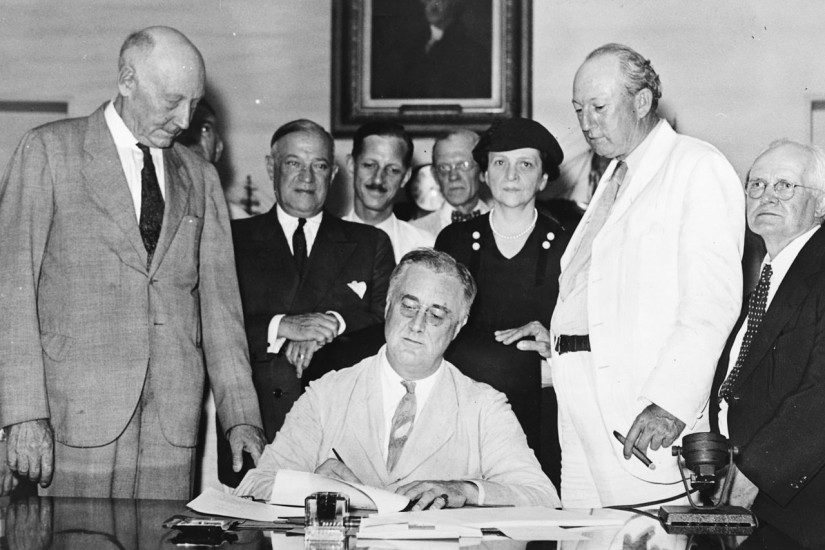In the throes of the Great Depression, Armstrong put forth progressive hypotheses about the obligations of industrialized nations to the economic well-being of their citizens. This drew the attention of FDR, who in 1934 invited Armstrong to work as Chief of Staff for Social Security Planning, on the Committee on Economic Security (CES). Suddenly, she moved from advocating radical reform to writing actual legislation.
Prior to Roosevelt, U.S. presidents were expected to steer clear of Wall Street interests. President Herbert Hoover had formed a conservative belief in small government that would define his approach to Depression Era economics, which offered no immediate or major federal intervention. Instead, he called upon states to regulate minimum wage and private charities to help solve the nation’s poverty.
Meanwhile, conditions around the country worsened. By 1931, the unemployment rate hit 15.8 percent. Homeless families scavenged in makeshift shantytowns (sardonically known as Hoovervilles). Still, Hoover refused to involve the government by fixing prices or controlling currency, which he feared would lead to socialism. Instead, he emphasized aid through private volunteerism and charitable works. He asked employers not to cut wages. He suggested neighbors help each other. He believed the economy relied chiefly on morale, and that it would self-correct.
When it didn’t, the country elected FDR, who believed an aggressive federal intervention was needed. He surrounded himself with people like Armstrong, who had studied social insurance for years.
Armstrong was attuned to politics. According to Nancy Altman, author and president of Social Security Works, she was an “infighter” whose outspokenness convinced the CES to propose a federal program that addressed old age insurance. With the help of Labor Secretary Frances Perkins, the first woman appointed to the U.S. Cabinet, the Social Security Act of 1935 passed. “There were a lot of very strong women who surrounded Roosevelt at the time,” says Altman.
Granted, the act had its flaws, one being that participants wouldn’t see the first monthly benefits until 1942. Republicans argued that building up reserves amounted to IOUs and warned people would have to start paying taxes. Many of the act’s original proposals, such as the inclusion of agricultural and domestic workers, were “temporarily” thrown out due to implementation difficulties. Armstrong supported excluding the groups for these reasons, though Altman insists critiques around gender and racial bias are unfounded. A series of reforms in 1939 expanded Social Security benefitsto include family dependents, wives, and widows — but no benefits for dependent men, who were presumed to be in the workforce.
